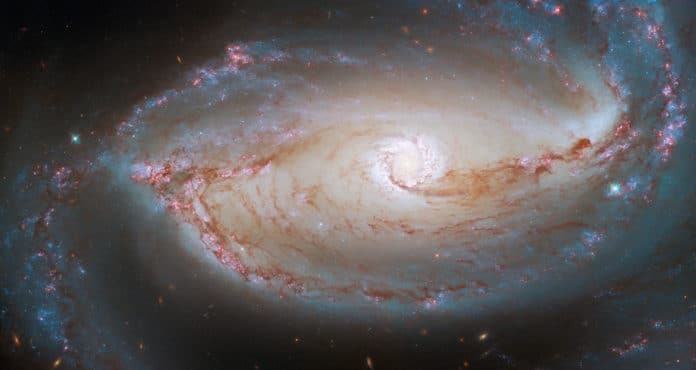The NASA/ESA Hubble Space Telescope offers an unpresidential view of the bright star-forming ring surrounding the heart of the barred spiral galaxy NGC 1097. Located about 48 million light-years from Earth in the constellation Fornax, the galaxy is a Seyfert galaxy.
This picture reveals the intricacy of the web of stars and dust at NGC 1097’s center, with the long tendrils of dust seen in a dark red hue.
NASA noted, “We can see this intricate structure thanks to two instruments on the NASA/ESA Hubble Space Telescope: the Wide Field Camera 3 (WFC3) and the Advanced Camera for Surveys (ACS).”
“Our eyes can detect light waves at optical wavelengths between roughly 380 and 750 nanometers, using three types of receptors, each sensitive to just a slice of that range. Our brain interprets these specific wavelengths as colors. By contrast, a telescope camera like the WFC3 or ACS is sensitive to a single, broad range of wavelengths to maximize the amount of light collected. Raw images from telescopes are always in grayscale, only showing the amount of the light captured across all those wavelengths.”
